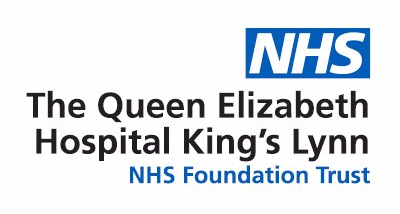Neurophysiology
What is neurophysiology?
Neurophysiology is a multidisciplinary diagnostic specialty working alongside other medical specialists and healthcare professionals to assist in the diagnosis, treatment and management of neurological disorders involving peripheral nerves, spinal cord and central nervous system, muscles and brain function. We provide services to both out-patients and in-patients within the hospital.
Neurophysiology also plays a role in monitoring people who have disorders and injuries affecting the brain including viral encephalitis, meningitis, stroke, dementia, new or acute seizures, status epilepticus, brain injury and brain death. For more urgent or serious conditions, this requires investigations to be performed frequently as an in-patient on the ward, for example A+E, Critical Care and Neonatal Intensive Care.
We provide out-patient services for referrals from Neurology, Orthopaedics, Rheumatology, Physiotherapy, Stroke Team, Paediatrics, MSK, and community services including GPs and surgical centres etc.
AccessAble
AccessAble helps inform you about the accessible facilities that are available at QEH, featuring relevant information about our hospital to help you make an informed decision when deciding to visit the area.

We provide the following investigations:
Electroencephalography (EEG)
Services include routine EEG with video, sleep EEG with video (sleep-deprived or melatonin induced), ambulatory EEG (the patient wears a portable EEG recorder at home for 24-48 hours)
This is a painless recording of the electrical activity of the brain from the scalp which is mainly used in the diagnosis of epilepsy and monitoring of people with this condition. It is typically non-invasive, with the electrodes placed along the scalp. In clinical contexts, EEG refers to the recording of the brain's electrical activity over a period of time, and is recorded from multiple electrodes placed on the scalp. EEG is most often used to diagnose epilepsy, which causes abnormalities in EEG readings. It is also used to diagnose, coma, encephalopathies, infections, and brain death. It can also serve as part of a group of prognostic tools following brain insult or injury.
Electromyography (EMG) and nerve conduction studies (NCS)
These tests can be performed as a separate investigation or one after the other in the same clinic appointment. Firstly, nerve conduction studies involve giving electrical pulses to stimulate different segments of nerves to investigate motor and sensory nerve function. Secondly, the use of fine concentric needle electrodes (similar to acupuncture needles) which are put into muscles to test muscle function. This is the EMG part.
The minimum time is 20 minutes but can last up to 45 minutes depending upon the investigation requested and patients symptoms.
The equipment used is extensively tested and is safe. Some precautions need to be taken with certain patients who have heart pacemakers, defibrillators or are on blood thinning drugs such as warfarin. If you have a defibrillator fitted, please contact the department prior to your investigation.
EMG may be used to evaluate many conditions/disorders including, but not limited to, the following:
Evoked potential investigations provide an effective objective assessment of different parts of the nervous system; for visual systems using Visual Evoked Potentials (VEPs), Electro-oculogram (EOG), or Electroretinogram (ERG), auditory and brain stem systems using Brainstem Auditory Evoked Potentials (BAEPs) and for the central nervous system using Somatosensory Evoked Potentials (SSEPs) from upper and lower limbs.
The minimum time is 45 minutes but can last up to 2 hours depending upon the investigation requested and modalities required.
The stimulus given may be a visual image, such as the movement of a checkerboard pattern on a TV screen, or a sound through headphones or a small electrical pulse to the skin. The choice of these is made depending on the type of symptoms and investigation performed.
VEP and ERG may be used to evaluate many problems/disorders including, but not limited to, the following:
SSEP are particularly useful for the evaluation of the whole somatosensory pathway up to the cortex and any conditions involving peripheral and central lesions.
BAEPs are useful for the evaluation of hearing loss or Acoustic Neuromas.

